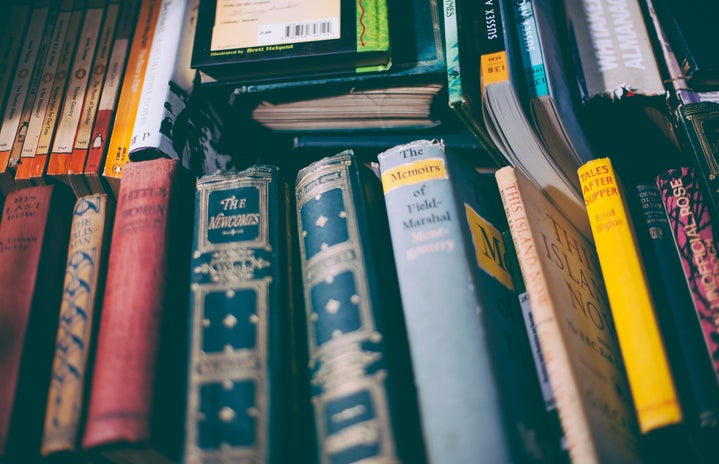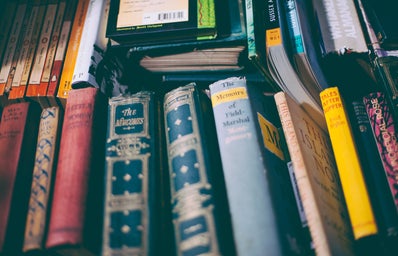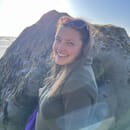Over the past few weeks, Republican officials in Texas have been calling for schools and libraries to remove hundreds of books from their shelves. This process of book-banning has been around for centuries, but what’s happening in Texas has been labeled “unprecedented.” There have even been calls to press charges on teachers or librarians who let young adults read the banned books.
Books can be banned for a variety of reasons, including violence, sexuality, and strong language. Books by Black and Indigenous (BIPOC) authors are disproportionately banned every year. The majority of books that are banned involve characters that are marginalized in some way. Banning these books prevents students from learning perspectives outside of their own–that is a big problem.
Fortunately, there is evidence that banning books only encourages more students to read them. I, personally, have really enjoyed reading banned books. Not only are these books great pieces of literature, but they have important real-life messages that are necessary for adolescents.
Here are 10 of the banned books that I have read, and why I think you should read them, too.
Content warning: some of these books discuss difficult topics like sexual violence and police brutality.
- “the hate u give” by Angie Thomas
-
Why it’s banned: strong language, racism, police brutality, “anti-police” messages
“The Hate U Give” is about a 17-year-old girl named Starr who witnesses one of her best friends get shot and killed by a police officer. Starr expresses feeling like she lives a double life–she lives in a poor majority-Black neighborhood, but attends a wealthy majority-white private school. She is forced to decide whether she should fight the system that killed her best friend, putting her own life at risk in the process.
I love this book and couldn’t recommend it enough. The book is banned because it discusses racism and police brutality, but Thomas didn’t put anything in this book that we haven’t seen happen to real-life Black men and women. It’s essential to read this story because we need to recognize and fight against police brutality.
- “the bluest eye” by Toni Morrison
-
Why it’s banned: graphic sexual violence
“The Bluest Eye” is about a young Black girl named Pecola who wishes for blue eyes so that she will be beautiful. Conforming to the Euro-centric standards of white children is what Pecola thinks will finally change her life. The book shifts between present-tense from Pecola and her friends’ points of view and past-tense from her parents’ POV.
The sexual violence in this book does make it a difficult read. Pecola is sexually abused by her father, and it is very hard to read those scenes, because of how awful it is. However, the discomfort is necessary for us to understand the messages that this book conveys. The book shows us how generational trauma and racism impact new generations, and how the inability to conform to Euro-centrism can impact mental health. Even though this book has disturbing content, it is a great piece of literature.
- “the kite runner” by Khaled Hosseini
-
Why it’s banned: religion, sexual references, strong language
If you take one message from this article, let it be to go read “The Kite Runner.” It is one of the best books I’ve ever read. This book is about two young boys in Afghanistan named Amir and Hassan. The two are best friends, but as they grow older and political tensions in the country grow, Amir betrays Hassan and then moves away with his father. Years later, Amir returns to Afghanistan after hearing of Hassan’s death to find his son.
This book is a beautiful story of betrayal and redemption. The story takes place in a Muslim-majority country around the time of Taliban control, which is a large part of why it’s banned. However, reading this book as a high-schooler was very eye-opening for me. I hadn’t learned about Afghanistan in any other classes, and this book was my introduction to a completely new story outside of my own perspective.
- “looking for Alaska” by john green
-
Why it’s banned: oral sex
It always makes me laugh that “Looking for Alaska” is banned for oral sex because that scene is literally one page of the entire book and is not even graphic! The sexuality in this book does not have a major impact on the storyline itself and is just one small part of the protagonist’s journey to understanding himself.
John Green has been vocal about this book being banned, but not on behalf of himself. On Twitter, he stated that he was upset that “Looking for Alaska” was on the banned book list because many will use it to show that banning books “isn’t about race.” He condemns the white-supremacist views of people who have banned books and encourages his readers to read banned books by Black authors.
- “the color purple” by Alice walker
-
Why it’s banned: graphic sexual content, violence, abuse
“The Color Purple” is about two sisters named Celie and Nettie. The book is a series of letters between the sisters as they go through various struggles and traumatic events. It shows the impacts of domestic violence, sexual abuse, and racism towards Black women.
The book does have graphic sexual content, but similar to “The Bluest Eye,” this content is meant to show us the harmful impacts that sexual abuse has, especially on BIPOC individuals. Reading about sexual violence makes us uncomfortable– and it’s meant to. We are supposed to learn through these books and then use that knowledge to make a difference in the real world for women who are going through these things.
- “the handmaid’s tale” by Margaret Atwood
-
Why it’s banned: graphic sexual content, violence
I’ve expressed my full thoughts on “The Handmaid’s Tale” in a separate article (that you can read here), but in short, this book is very relevant and necessary to read. It is a dystopian novel about the United States being turned into a religious theocracy called Gilead. In Gilead, women are highly oppressed, and “handmaids” are forced to bear children for wealthy commanders.
Atwood did not put anything in the book that hasn’t already happened in real life, so banning the book due to sexual violence is unfair considering we already see this happen often. I think that reading dystopian novels shows us that we are not all that far off from living in one, so we need to educate ourselves.
- “speak” by Laurie halse Anderson
-
Why it’s banned: political viewpoint, rape, strong language, “bias against male students”
“Speak” is about a high school freshman named Melinda who is shunned by her classmates because she called the cops on an end-of-summer party. What Melinda doesn’t tell anyone is that she called the cops because an upperclassman sexually assaulted her at the party, and she is still afraid of what he will do to her. The story follows Melinda as she learns how to speak up for herself.
I literally rolled my eyes when I heard this book was banned for “bias against male students.” Sexual assault is unfortunately way too common, and highlighting it in this novel is not a bias against males, it is a callout to rapists. The fact that male students can’t be distinguished from rapists… well, it speaks for itself.
- “how to be an antiracist” by Ibram x. kendi
-
Why it’s banned: racism, “selective storytelling”
In “How to be an Antiracist,” Kendi introduces the concept of antiracism and explains why simply “not being racist” is not good enough for achieving racial justice. The book is a combination of personal essays and academic research, making it a very compelling read. Especially in the wake of the Black Lives Matter protests of 2020, I think this book should be required reading, especially for white people like myself who have lots of unlearning to do.
Ibram X. Kendi has been ridiculed for several years for his writing, particularly by conservatives. His condemnation of white supremacy in this book makes many white people uncomfortable–but again, that is the point. While reading this, I had to come to terms with the fact that I am complicit in systemic racism against Black people and other people of color. It doesn’t feel good to learn that, but that’s exactly why we need to learn that. Banning this book will only lead to greater racial injustice.
- “drama” by raina telgemeier
-
Why it’s banned: political viewpoint, sexual content, LGBTQ+ characters
“Drama” is a graphic novel about a middle school girl named Callie who loves theater, and is determined to make her school’s musical the best it can be. The fast-paced novel follows Callie and her friends as they navigate drama both onstage and off.
I haven’t read this full book, but my sister has, and when I mentioned that it was on the banned books list, she laughed and told me it wasn’t sexually graphic at all. Unfortunately, the mere fact that it includes LGBTQ+ characters was enough for this book to be labeled explicit.
- “Anne frank: diary of a young girl” by Anne frank
-
Why it’s banned: sexual content, homosexual themes
“The Diary of a Young Girl” is Anne Frank’s real diary from 1942-1944. Anne Frank was a young Jewish girl in Holland during the Holocaust, and she and her family lived in a “Secret Annex” of an office building to hide from the Nazis. In 1944, Anne and her family were discovered and taken to concentration camps, where all but her father, Otto, died. After liberation, Otto published his daughter’s diary to show the world her perspective during such a dark time in history.
There were complaints that the passages about sexuality were “pornographic,” which led to several schools censoring these parts of the book. However, they were faced with backlash for doing so, with free speech organizations urging them to provide the book as-is for students to have a real and educational perspective on everything that happened in this part of Anne’s life.
Ironically, banning these books has only made students want to read them even more. I realized when researching for this article that there are dozens of banned books I’ve never read, and I’m very excited to add them to my TBR list.


